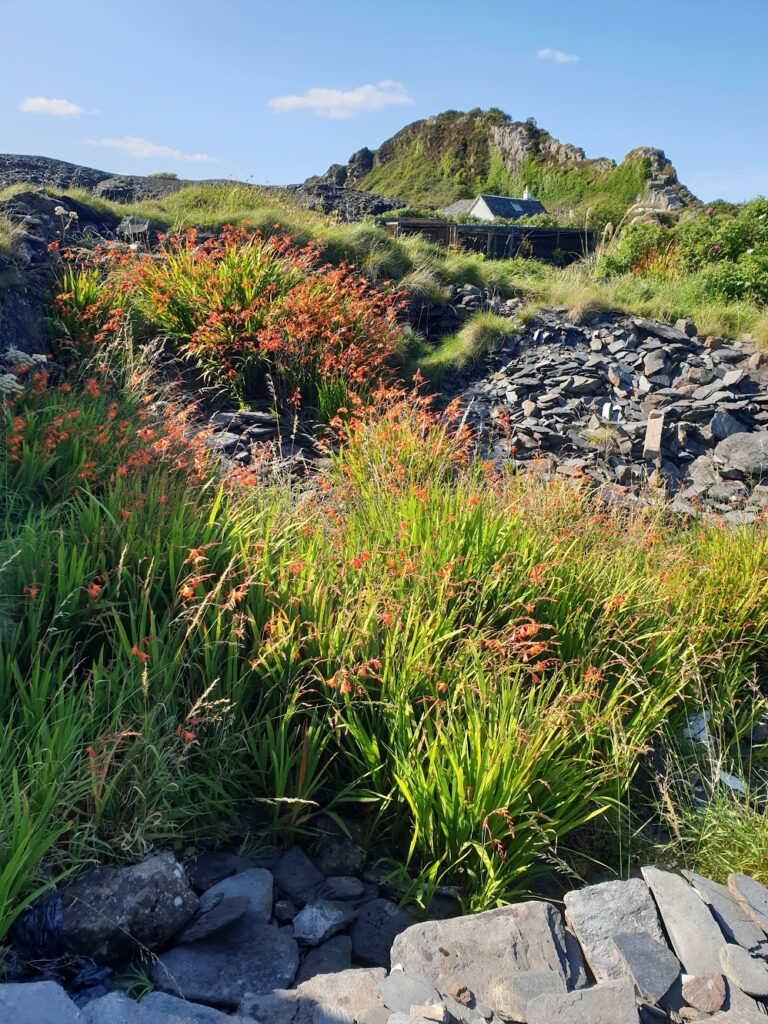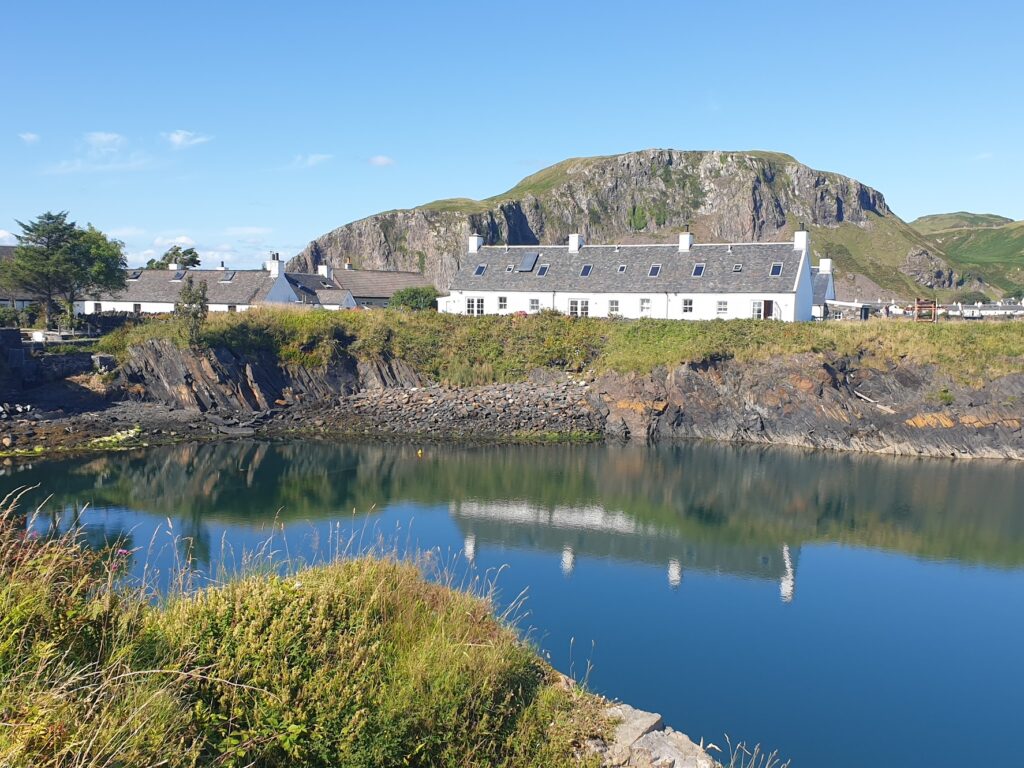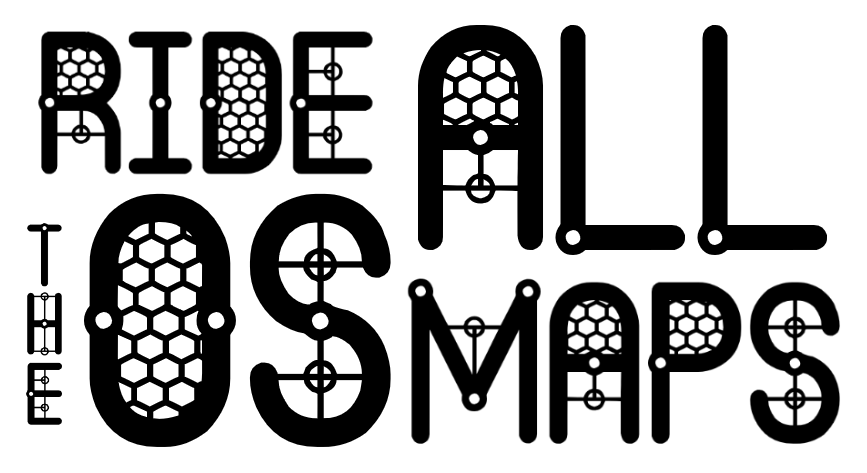
I should have been writing this ages ago; but I was instead having a long and interesting conversation with the owner of the house I am staying in on Seil Island, an hour’s cycle or so to the south of Oban. It turns out that we have much in common, and are both trying to see and do as much as we can with our lives while good health and relative youth permit. For her, and her husband, it is sailing that they are making time for, having retired early and moved north from Edinburgh to a very different life. For me, at the moment, it is cycling. But for both, the urge to do these things sooner rather than later – and not to put off the life we really want – has driven our decision making. Which, I suppose, is a long way of explaining how we happened to meet today in this delightful corner of Scotland that I have somehow contrived to miss on all my previous trips north.
The Slate Islands, as the name suggests, were dominated for many years by slate mining, and the roofs of many homes across Britain and beyond were made using slate from here. I only had time this afternoon to get to know one small corner; but the island and community of Easdale was a great place to start. It sits just off the tip of Seil, where the road ends at the small village of Ellenabeich, a place that is built on land reclaimed from the sea by the build up of slate spoil over many years of mining. It consists of two terraced streets of low, whitewashed, cottages built entirely of slate, uniform in their appearance. At one end is the jetty where you summon the small ferry to take you over to Easdale.

The weather was stunning today and everything was looking about as good as it ever could. From this point, you look across the sea to the south east side of the Isle of Mull, a wild looking coastline of mountains and cliffs five miles away at its closest point. But there is beauty and interest in every direction. It is difficult to imagine the hardship that families here must have endured during the heyday of the slate industry in the 18th century. The industry went into decline after a terrible storm in 1881 flooded the slate quarries with sea water, and ceased for good after the First World War.

When I landed on Easdale after a ferry crossing of less than five minutes, I was struck by the quietness of the small community. It is made up of a collection of whitewashed cottages arranged around open grassy spaces. Today it has a somewhat bohemian feel to it, with flags, stones, driftwood and other objects decorating the spaces next to the cottages. The island is tiny. You could walk right around its perimeter in 10 minutes if you wished. For most of that time you would be treading on loose slate, worn by the sea and the weather into smooth flat shapes and making a distinctive clatter each time you step on it. Even the beaches, between the exposed rocks, scrunched beneath your feet with slate. All around were colourful plants and flowers, including bright orange crocosmia, large white daisies, cow parsley, blue harebells, bushes of crimson fuchsias, and wild pink roses, all set against lush green foliage. But no trees to speak of.

There is a small hill that rises behind the cottages affording panoramic views as far away as Islay, Jura, Colonsay, Lismore and the other Slate Islands including Luing and Seil. Today the visibility was excellent and you could see land 30 miles away across the sea. But just below, ringing the island, are several deep rectangular expanses of water, what remains today of the flooded slate quarries. They are an odd sight, clearly man made and yet assuming a new natural beauty. A couple are regularly used for open water swimming and the warm weather had brought out several families. I was tempted. If only I had come prepared. With a wet suit.

But the other main use they are put to, and which I enthusiastically involved myself in, is stone skimming. This is one of my favourite things to do, and I am not bad at it. The conditions here, however, are remarkable. There is an endless supply of top class flat stones and a wide expanse of flat, calm water. I found that I was regularly reaching double figures of bounces, which is well above normal. It was brilliant.
I am not the first one to work this out. In fact, at the end of September every year, Easdale plays host to the World Stone Skimming Championships. Really. Some people take it very seriously. But as far as I know, it is open to all comers. I’m sure you can find out more about it on YouTube. One day, maybe, I just might come back here and enter. I won’t win; but it could be my only hope of competing in any World Championship, so why not? Life, after all, is for living!


4 replies on “Map 55 – A clean slate”
What a lovely blog entry! You have a really nice writing style….and I looked it up Bally castle is 70nm from Seil, so doube the distance I quoted. Enjoy your onward journey 🙂
Thanks Uta. Really enjoyed our chats. Happy sailing!
Impressive descriptions of the various plants Mark. Some of Jennifer’s expertise has rubbed off perhaps ? (or was it all made up? – I wouldn’t know 🙂 ).
Impressed to hear of your prowess at stone skimming – I could never get the hang of that!
As soon as you mentioned the slate I was wondering about skimming, a great pastime